
For years, the China Taiwan war conflict has been simmering, fueled by historical differences and territorial disputes. China sees Taiwan as a rogue province that must be brought under its umbrella and is using diplomacy and intimidation to get its way. Taiwan is a democracy with its own army and recognition from other countries, walking the tightrope between independence and cross-strait relations. Here’s which weapons China can use against Taiwan and how rocket force, navy, and air force come, into play. We also discuss China nuclear weapons and chemical weapons.
Explore 10 Dangerous Weapons May Use While China Taiwan War
Deadliest Weapons of China's Rocket Force
1. The DF-16 Missile
The DF-16 is a strategic weapon that is mobile, precise, and operational. MRBM can carry conventional and nuclear warheads. Launched from mobile platforms. More survivable and operational.
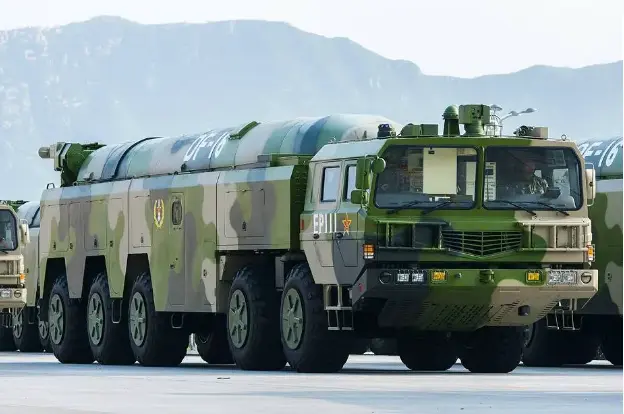
Key Details:
- Range: Approximately 1,000 to 1,500 kilometers (620 to 930 miles).
- Payload: Can carry a single warhead with a high degree of accuracy.
- Launch Method: Utilizes mobile transporter-erector-launcher (TEL) vehicles for rapid deployment.
- Guidance System: Equipped with advanced guidance technology for precise targeting.
- Deployment: Primarily deployed by the People’s Liberation Army Rocket Force.
Potential Threat:
The DF-16 missile is concerning because of its guidance and distance. It can hit military and infrastructure targets with accuracy and that’s China’s military deterrent in the region. It’s part of China’s power projection and concerns protection in regional security scenarios.
2.DF-31
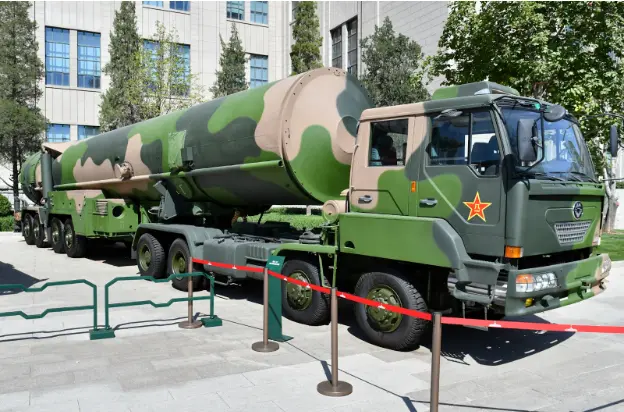
The Dong Feng 31 is a third-generation long-range, road-mobile, three-stage, solid-fuel rocket intercontinental ballistic missile in the Dongfeng missile series developed by the People’s Republic of China. It can carry a single thermonuclear weapon with a power of one megaton.
- Length: 21.6 m (70 ft 10 in)
- Engine: Solid-fuel rocket
- Flight altitude: up to 1200 km
- Launch Platform: Silo, 8-axle TEL
- Mass: 54 t (54,000 kg; 60 short tons)
Working capacity: 7,200–8,000 km (4,500–5,000 mi) (DF-31); 13,200 km (8,200 mi) (DF-31A)
Top Dangerous Weapons in the China Air Force
1. H-20 Stealth Bomber
The China H-20 Stealth Bomber will be a PLAAF game changer, for long range strikes. Details and specs are classified but it will be stealthy and have a big payload for conventional and nuclear weapons to project power regionally and globally.
Main Details:
- Designation: Xian H-20
- Type: Strategic Stealth Bomber
- Role: Long-range, strategic bombing missions with the ability to deliver both conventional and nuclear payloads.
- Development: Under development by the Xian Aircraft Industrial Corporation as part of the PLA Air Force’s modernization efforts.
- Range: Expected to have an intercontinental range, enabling it to strike targets far beyond China’s borders.
Nuclear Deterrence: The H-20 may have nuclear capability and that’s a worry for everybody.
Launch Date: Not announced yet by the Chinese government. But development and testing are going on. It may be deployed soon to add to China’s military muscle.
2. J-XX
The “J-xx” designation typically refers to various fighter jets developed by China, with “J-20” being the most prominent example. Here’s a concise overview of the J-20:
Launch Date: The Chengdu J-20, China’s fifth-generation stealth fighter, was officially unveiled in 2011.
Strengths:
- Stealth Capabilities: Designed with advanced stealth technology to reduce radar detection.
- Avionics and Sensors: Equipped with modern avionics and radar systems for enhanced situational awareness.
- Maneuverability: High agility and maneuverability, capable of both air-to-air and air-to-ground combat missions.
- Weapons Systems: Can carry a variety of air-to-air and air-to-surface missiles, including long-range standoff weapons.
- Operational Range: This has a significant operational range, allowing it to cover vast distances.
3. The J-16D: China’s EW Dominance Fighter
J-16D is an EW plane from China made by Shenyang Aircraft Corporation. Based on the J-16 fighter jet which is derived from Su 30MKK. J 16D is for combat and operations with the latest jamming tools and EW equipment to jam enemy radar, communications, and other electronic signals.

Strengths:
- Advanced EW Capabilities: Equipped with powerful jamming pods and sophisticated electronic warfare systems to counter enemy radar and communications.
- Multirole Functionality: Retains the combat capabilities of the J-16, including air-to-air and air-to-ground weaponry, making it versatile in various combat scenarios.
- Enhanced Situational Awareness: Features an advanced avionics suite that enhances situational awareness and combat effectiveness in contested environments.
- Combat Proven Design: Builds on the proven airframe and systems of the J-16, ensuring reliability and effectiveness
Danger
The J-16D with EW is a threat to opponents because it can disrupt and kill their systems. By jamming their radar, comms, and command systems the J-16D can take away their ability to gather intel, coordinate, and be situational aware in the fight.
Launch: The J-16D was officially unveiled and made its debut flight in December 2015.
4. KJ-600 AEW&C
Key Details:
- Capabilities: The KJ-600 is equipped with a large radar dome mounted on top of
- its fuselage, allowing it to detect and track airborne and surface targets over long distances. It can operate in various weather conditions, enhancing situational awareness and battlefield management.
- Strengths: Its advanced radar technology and command capabilities make it a valuable asset for China’s military, particularly in monitoring the East and South China Seas and potentially extending its operational range.
- Launch Date: The exact launch date of the KJ-600 has not been officially disclosed, but it has been under development and testing in recent years.
Assessment of Danger:
The KJ-600 AEW&C danger is its ability to give China overall situational awareness and command. By providing early warning and control it can detect and respond to threats, and enhance its military and defensive capabilities.
China's Navy Force Most Powerful Weapons
1. China's Massive Type 055 Destroyer
The Type 055 destroyer is a class of stealth guided-missile destroyers constructed for the Chinese People’s Liberation Army Navy.
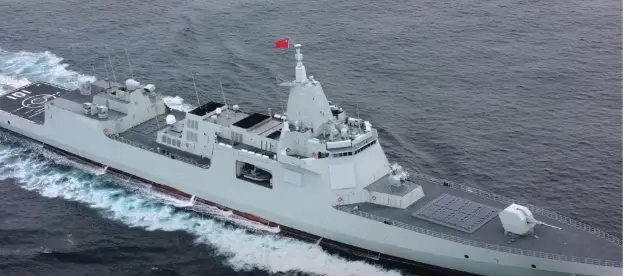
- Active: 8
- Aircraft carried: 2 medium-lift helicopters:
- Aviation facilities: Stern hangar; Helicopter landing platform;
- Made: 2014–present
- Complement: 300+
- Cost: CN¥6 billion (US$888 million) per unit including R&D (FY 2017)
- Displacement: 11,000 tonnes (standard); 12–13,000 tonnes (full load)
2. The Fujian Type 003 Aircraft Carrier
The first aircraft carrier of the Type 003 class and the third in the Chinese aircraft carrier program is called Fujian, after the province of the same name. It is China’s first indigenously designed carrier and its first capable of catapult-assisted take-offs; previous Chinese carriers used ski-jumps.
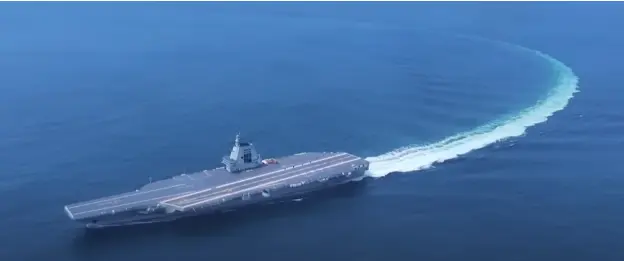
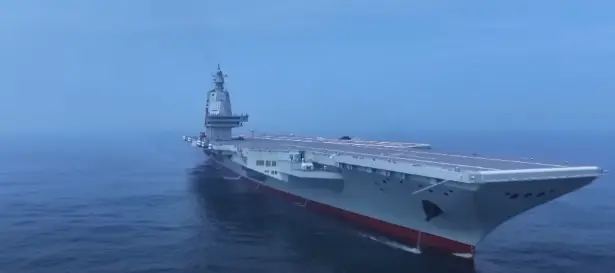
- Launched: 17 June 2022
- Size: Flight deck: 316 m (1,036 ft 9 in)
- Propulsion: Steam turbines
- Aviation facilities: Hangar deck
- Displacement: Full load: 80,000–85,000 t
3. Type 730 CIWS
A Chinese seven-barrelled 30 mm Gatling gun/rotary cannon (CIWS) is called the Type 730. The PLA Navy has designated it as H/PJ12. It is controlled by radar and electro-optical tracking devices and installed in an enclosed automated turret. Up to 3 km is the effective range, and the maximum fire rate is 5800 rd/m.
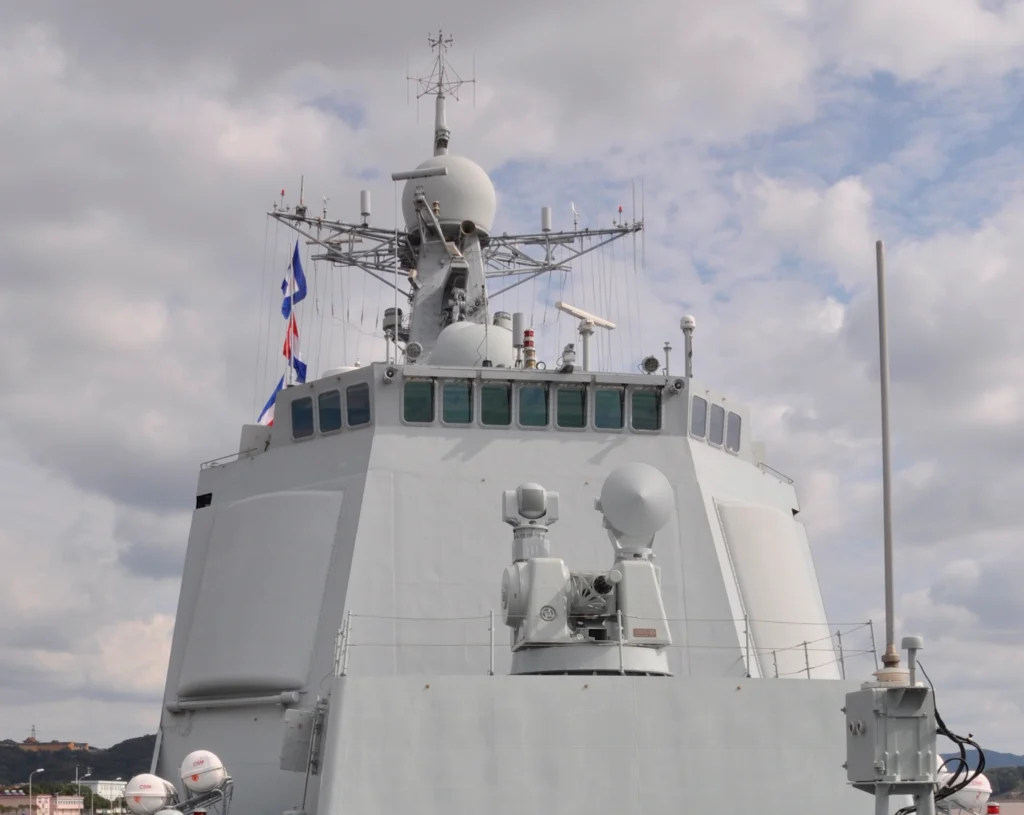
- Barrels: 7-barrel (Type 730); 11-barrel
- Maximum firing range: 5 km (3.1 mi)
- Muzzle velocity: 1,000–1,150 m/s (3,300–3,800 ft/s)
- Caliber: 30×165mm AO-18
- Effective firing range: 3–4 km (1.9–2.5 mi) (aerial); 4–5 km (2.5–3.1 mi) (maritime)
- Guidance system: TR47C J-band radar; OFC-3 electro-optical fire control system
- Shell: HEI-Frag, Frag-T, APFSDS
4. AK-630
The AK-630 is a Soviet and Russian naval armament system with a fully automatic rotary cannon with close-in capability. The “630” name refers to the weapon’s six 30-millimeter barrels. The system is housed in an enclosed automatic turret and is controlled by MR-123 fire-control radar as well as television detection and tracking.

- Action: Gas-operated rotary cannon
- Barrel length: 1,629 mm (64 in) (total); 1,460 mm (57 in) (rifled)
- Caliber: 30×165mm AO-18
- Designed: 1963–1973 (AK-630); 1983–1989 (1993) (AK-630M1-2)
- Effective firing capacity: 4,000 m (13,000 ft) (aerial) 5,000 m (16,000 ft) (maritime) 5,000 m (16,000 ft)
- Feed system: Belt: 2,000 rounds (additional 1,000 rounds in the reserve feed bin, AK-630M); 4,000 rounds (AK-630M1-2)
The Role of China Nuclear Weapons Strategy Against China Taiwan War
China has a “no first use“ policy, which is to not use nuclear weapons at all. That will factor into China’s calculations if there’s a war with Taiwan.
China won’t use nuclear weapons against Taiwan anytime soon because of the huge cost. But it all depends on how things unfold, especially if the US intervenes. The Chinese will use all conventional means first and then think very hard about the strategic, political, and military implications before nuclear.
Know China Role in Chemical Weapons
China has been involved in the development of chemical weapons since the early 1900s. On the other hand, it ratified the Chemical Weapons Convention (CWC) in 1997 after signing it in 1993. China declared under the CWC that it possessed neither chemical weapons stockpiles nor chemical weapons-related facilities, only a small number of which had been destroyed or transformed for peaceful uses under the watchful eye of the Organization for the Prohibition of Chemical Weapons (OPCW).
Sources and general beliefs suggest that China is thought to be in possession of powerful, unreported chemical weapons that might seriously endanger other nations. This raises concerns about potential cross-border impacts and underscores the need for transparency and international oversight in arms control agreements.
Conclusion
Even though China’s military strength poses a concern, for Taiwan, the global situation is, such as how other countries react and whether the U.S. gets involved. This will greatly influence the result of any potential conflict. Given the consequences at hand it is crucial to handle the situation with care and strategy emphasizing the significance of diplomacy and efforts to prevent conflicts in order to uphold peace and stability, in the region. Learn the Future Prospects: Long-Term Impact Post Taiwan China War.





